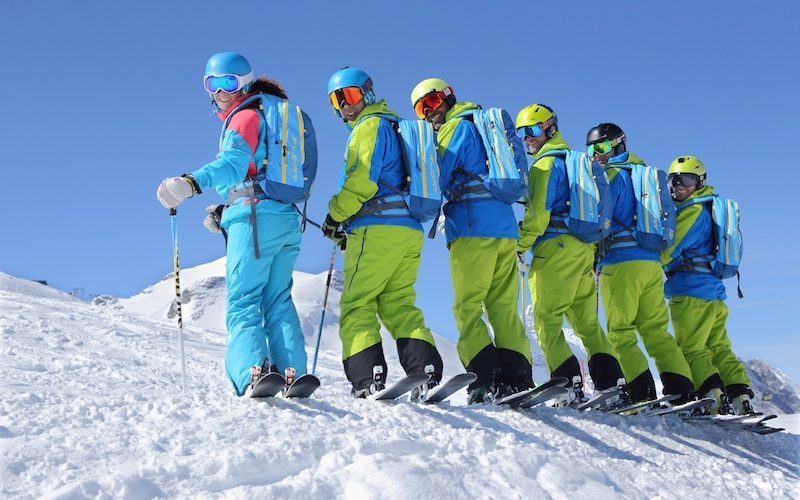I’m not sure where the phrase “Billy No Mates” originally came from, but in off-piste skiing terms it’s someone you definitely do not want to be. Don’t freeride alone. You need other skiers to ski with and they need to be carefully vetted. They need to know the area, the snowpack history and be well trained in off-piste safety and etiquette.
It can be tempting to do it on your own or with your mates, and it’s certainly a lot cheaper, but at what price? It only needs one mistake, and what price are you willing to pay for that? Exactly – take our advice and don’t freeride alone.
So let’s begin with increasing your circle of trusted skiers to lead you, and it begins with one question.
ARE THEY QUALIFIED?
You’re going to need to know your stuff when it comes to qualifications. The first one and probably one of the most useful is UIAGM – Union International des Association de Guides de Montagnes (French), also known as IVBV in German and IFMGA in English, which translated means International Federation of Mountain Guide Associations. UIAGM is the most commonly known qualification. Anyone with these initials after their name is a qualified mountain guide who has been trained and assessed to an extremely high level in off-piste mountain safety. So if you want proof of your guide’s qualification and experience, look for these initials.
Some instructors are also qualified to teach and lead off-piste but only at the highest levels. In some countries membership of the ISIA (International Ski Instructors Association) may suffice. ISIA instructors are trained and assessed in off-piste safety to a certain level. Any instructors below ISIA may not have any accredited off-piste safety skills. Some countries require qualifications above the ISIA level which involves further training and assessment in off-piste mountain safety. These include the UK qualification ISTD, known as the International Ski Teacher Diploma, the French Diplôme, also known as the BEES – Brevet D’ Etat D’Educateur Sportif (ski alpine), Italian Maestri Di Sci, Swiss Patent and the Staatlich Geprüften Skilehrer in Austria.
There’s also a difference between instructors and mountain guides. Guides are generally not trained in the skills to teach people off-piste skiing, although some guides may also be trained instructors. So if it’s only off-piste leading you’re looking for then a guide will suffice, UIAGM or equivalent. The higher-level instructors are trained to teach people to ski off-piste but are not permitted to lead groups on glaciated terrain or plan routes that involve the use of ropes, although they can use them for emergencies so you need to bear this in mind. In Austria you do have higher levels of qualified instructors that are trained and qualified to lead on glaciated terrain in their home country. If it’s personal development you’re looking for then an instructor may be the right choice for you. Check that their qualifications include off-piste skiing to the level you require.
If the skiers you are skiing with are not qualified to lead off-piste and are mates then that’s a big decision you’re taking. You and they need to be incredibly well trained and educated and know the local area as well as the snowpack history. Don’t forget: in an accident, questions will be asked.
Phil Smith is founder of Snoworks All-Mountain Ski Courses. Snoworks run Off-Piste and Backcountry courses throughout the winter along with Off-Piste Adventure trips to destinations around the world. For more details go to:
Photo: Snoworks




